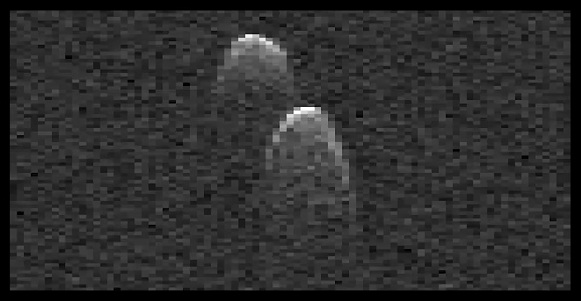| Online: | |
| Visits: | |
| Stories: |

| Story Views | |
| Now: | |
| Last Hour: | |
| Last 24 Hours: | |
| Total: | |
Radar Data of Asteroid 1999 JD6 Revealed the Object is a Contact-Binary – Astronomers Watch the ‘Trillion-Dollar Asteroid’ Asteroid 2011 UW158 as it Passed by Earth (+Video)
Radar observations of two asteroids 1999 JD6 and 2011 UW158 ‘Trillion-Dollar Asteroid’
Radar data of asteroid 1999 JD6 revealed the object is a contact binary consisting of two lobes. The data was collected over seven and a half hours on July 25, 2015, when the asteroid was about 4.5 million miles (7.2 million kilometers) from Earth.
Scientists were able to use two Earth-based radio telescopes to capture “images” of the ‘Trillion-Dollar Asteroid’ asteroid 2011 UW158 as it passed by Earth on July 19.
To obtain the views, researchers paired NASA’s 230-foot-wide (70-meter) Deep Space Network antenna at Goldstone, California, with the 330-foot (100-meter) National Science Foundation Green Bank Telescope in West Virginia. Using this approach, the Goldstone antenna beams a radar signal at an asteroid and Green Bank receives the reflections. The technique, referred to as a bistatic observation, dramatically improves the amount of detail that can be seen in radar images. The new views obtained with the technique show features as small as about 25 feet (7.5 meters) wide.
More information about asteroid radar research is at: http://echo.jpl.nasa.gov

Image credit: NASA



